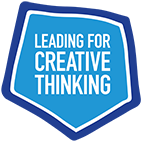Leading change for creativity in schools: mobilising creative risk-taking and productive failure
Creely, E., Henderson, M., Henriksen, D. and Crawford, D. (2021) International Journal of Leadership in Education, 1-24.
Summary
This paper explores the role of leadership in promoting creativity and risk-taking in education using Kurt Lewin's theory of change, specifically the concept of "unfreezing." Based on a case study of a school principal and year 8 teachers at a school in Melbourne, the findings suggest that implementing creative risk-taking and productive failure as pedagogical principles requires support from leadership and a willingness from teachers to embrace these ideas in the complex dynamics of the classroom.
‘Productive failure’ the authors argue, is a valuable learning experience. Without being willing to take risks and potentially fail, learners/teachers will not be able to explore new ways of thinking, acting, doing, making, or learning. Embracing failure as a part of the creative learning process can lead to growth and innovation.
The paper explores Kurt Lewin's change model, which emphasizes the importance of unfreezing old practices, implementing strategic changes, and refreezing new practices to sustain the desired changes. The model is seen as dynamic and complex, allowing for feedback and adjustments based on ongoing evaluation and effectiveness.
Lewin argues that in established organizational settings, it is important to confront the need for change and critically evaluate existing practices. This is not change for the sake of change, but rather a focus on improving outcomes by adapting current beliefs and practices. To motivate staff towards change, Lewin emphasizes the importance of building trust, recognizing the need for change, and actively working on solutions that involve all stakeholders.
In Lewin's model of change, unfreezing refers to the readiness for change, while changing involves strategically implementing the desired change based on a vision and strategic planning. This process encompasses both organizational and social aspects, as well as a cognitive shift towards new ways of thinking that ultimately lead to action. The change is driven by persuasion, connecting the perspectives of respected individuals with those of the group to demonstrate the desirability of the unfolding change.
According to Lewin's model of change, once change has been initiated and established in policies and practices, there is a need for "refreezing" to stabilize and reinforce the change. In the context of building a more creative and risk-taking school culture, refreezing involves enacting practices and structures to sustain the change, while allowing for flexibility to avoid rigid conformity. Lewin's model emphasizes the importance of dialogue, fluidity, and active oversight throughout the stages of change to ensure its effectiveness.
A small scale study, the article is interesting for its in-depth exploration of one headteacher’s views about what he wanted the school to be able to achieve, and what was actually happening.

Lewin's idea of facilitating unfreezing is perhaps as necessary for students as it is for teachers. Both have to be open to change in order for change to happen successfully. This finding suggests that classroom initiatives should be supported before and during the change process, with school leadership playing a crucial role in sustaining long-term effects on teaching practices. Particularly in creative initiatives that challenge norms, change cannot be a one-time event but rather a continuous process for it to be effective.
In line with our ideas in Leadership for Creative Thinking the paper explores the ways that creative leaders must consider structural change as well as pedagogical and other changes. It helpfully acknowledges the ways in which the demands of school curricula, such as timetables and testing, can make it challenging for teachers to take risks and learn from failure in the classroom. It suggests that creating a school culture that values these aspects and allows for flexibility within the curriculum may be necessary. However, the tension between meeting performance expectations and fostering creativity remains unresolved in the data presented.
A key theme that can be seen in the research is the conflict between teaching for creativity and high stakes testing. There was a tension between ideals expressed by educational leaders and the practical challenges faced by teachers. The principal of the school believed that the school was innovative and progressive in its teaching approach, but there was a conflict because the school also prioritized traditional teaching methods to maintain its high performance in tests and exams, especially for older students. This created a disconnect between the leadership's claims about promoting creativity, risk-taking, and learning from failure, and the teachers' ability to implement these ideas consistently due to the pressure for good academic results.
The text suggests that creating a school culture that supports effective teaching practices is influenced by the leadership and extends to the teachers who directly interact with students. This issue is connected to the primary goals of the school and requires professional development alongside managing changes in teaching methods. In summary, the text emphasizes the importance of leadership, school culture, and ongoing professional development in promoting effective teaching practices aligned with educational goals.
Reflecting Together
In what ways do you find learning ‘productive failures’ in your own leadership practices?
How could you apply Kurt Lewin’s model of change in your own setting?
Although this research is located in an Australian private school, to what extent do the issues it raises speak to your own experiences as a leader, whatever sector or phase you work in?
